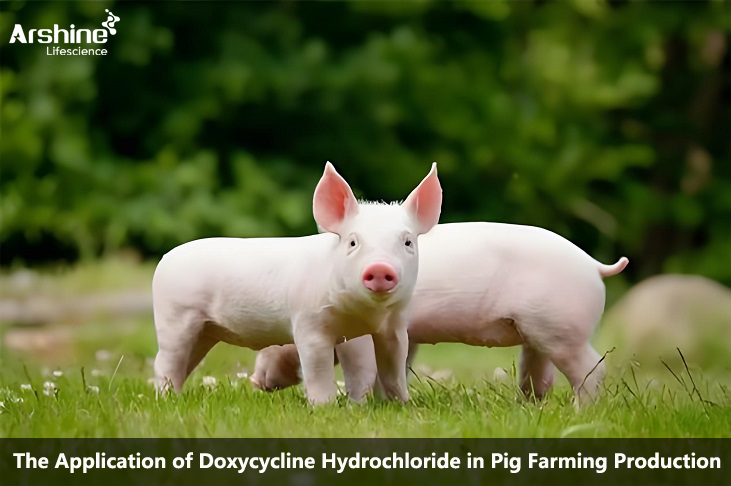

Doxycycline HCL, also known as Oxytetracycline, is one of the most commonly used drugs in the treatment of pig diseases. Its widespread use in pig disease treatment indicates its unique medicinal value that cannot be replaced by other veterinary drugs. It is often used in combination with Florfenicol, and the efficacy of both drugs is comparable.
Introduction to the Characteristics of Doxycycline:
Physical characteristics: Doxycycline is a yellow (light yellow) powder with a bitter taste. It is characterized by high antibacterial efficiency, low toxicity, broad antibacterial spectrum, and high and rapid absorption rate.
Mechanism of action: Doxycycline is orally absorbed in pigs, enters bacterial cells, acts on the 30S subunit of bacterial ribosomes, interferes with bacterial protein synthesis, inhibits normal growth and reproduction, and exhibits rapid bacteriostatic effects.
Comparison of antibacterial strength with other tetracyclines: Doxycycline > Tetracycline > Chlortetracycline > Oxytetracycline. Therefore, Doxycycline is rightfully called the "leader" among tetracycline antibiotics and is one of the most commonly used veterinary drugs after Florfenicol.
Doxycycline has high liposolubility and is 2-4 times stronger in antibacterial activity than Oxytetracycline. It is commonly available in powder form, with injectables being less common and having significant irritation to pigs.
Antibacterial spectrum and applications: Doxycycline is one of the broadest-spectrum antibiotics, effective against Gram-positive bacteria, Gram-negative bacteria, rickettsiae, porcine spirochetes, porcine Chlamydia (porcine asthma), porcine mycoplasma (porcine abortion), porcine erythrocytes (porcine hemolytic anemia), and some parasites (summarized as two bacteria + four viruses + one parasite).
Precautions for Using Doxycycline:
Doxycycline is prone to decomposition in alkaline environments and is more stable in acidic environments.
Do not use Doxycycline with feed or drugs containing aluminum, magnesium, calcium, iron, and other metal ions.
When administering Doxycycline in feed, sprinkle a little grease on the surface of the feed to increase the renal tubular reabsorption rate of the drug, thereby enhancing its efficacy.
Doxycycline undergoes enterohepatic circulation in pigs, which increases its half-life.
Prolonged use of Doxycycline in pigs may lead to secondary infections, weakening of the digestive system, liver damage, and deficiencies in vitamin B and vitamin K.
Doxycycline is a fast-acting bacteriostatic antibiotic and should not be used with fast-acting bactericidal antibiotics such as penicillins (including amoxicillin) and cephalosporins to avoid reducing efficacy.
Dosage when combined with Florfenicol: The ratio of Doxycycline to Florfenicol is 2:1. First, calculate the dosage of Doxycycline, then divide it by 2 to obtain the dosage of Florfenicol.
Other combinations: Doxycycline can also be used in combination with Tylosin, macrolide antibiotics (such as Tilmicosin, Tiamulin), and other tetracycline antibiotics to treat refractory respiratory diseases and other conditions in pigs effectively.
Clinical Application:
Add: Block 14, No.100, Luyun Road, Changsha 410205, Hunan, China.
Email: info@arshinevet.com
WeChat: +8618874001228
WhatsApp: +8615697311407
Tel:86-731-82294958